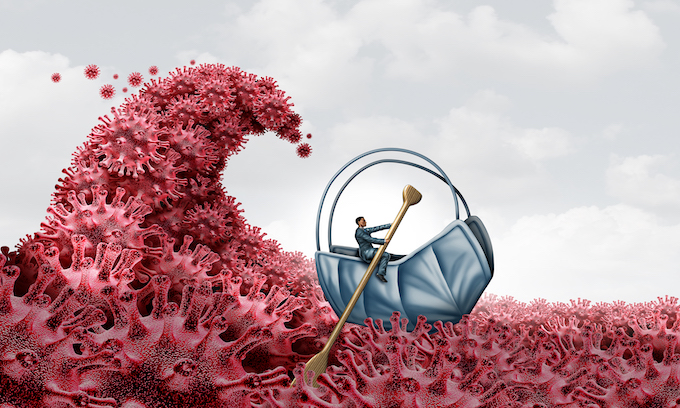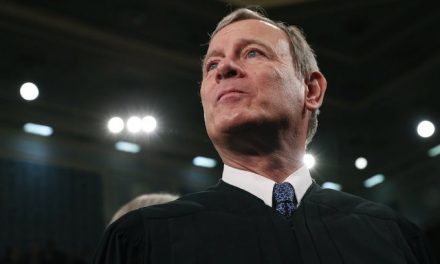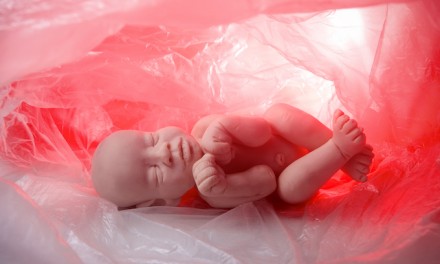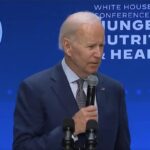When coronavirus cases in California began a dangerous ascent in November, Gov. Gavin Newsom tried a new approach.
The state imposed a nighttime curfew for the state’s hardest-hit counties, saying it was crucial to decrease transmission and slow hospitalizations.
“We are sounding the alarm,” Newsom said as he issued the order on Nov. 19.
It didn’t appear to work.
Some local sheriffs, like those in Sacramento and El Dorado County, quickly said they wouldn’t enforce a curfew. Others questioned whether the coronavirus was spreading much at night. Within two weeks, Newsom was on camera once again, announcing stricter measures to slow the spread.
“We’ve seen slight reductions (from the curfew,) but nothing too significant,” Mark Ghaly, Secretary of California Health and Human Services, said last week. “We had hoped and wanted to see more from that.”
After nine months of pandemic pandemonium, warnings to stay home and limit gatherings increasingly are falling on deaf ears.
“Not staying home,” one YouTube user commented as Newsom issued his latest stay-at-home order.
“We already did this AND IT DID NOT WORK,” said another. “I’m so confused. I’ve been staying home all year, what’s changed?”
Newsom himself slipped up in early November with a dinner at the French Laundry. San Francisco Mayor London Breed was spotted at the same swanky Napa restaurant a day later. Five lawmakers ate together outside at a restaurant this week, mixing multiple households following the first day of their session.
“Can we not have dinner?” Assemblyman Adrin Nazarian said when a Sacramento Bee reporter asked about the gathering.
The state’s top health official, Dr. Mark Ghaly, has started referring not just to “COVID fatigue,” but to “COVID resentment.”
“It is very difficult to maintain fidelity to this kind of public health behavior,” said Brad Pollock, associate dean for Public Health Sciences at the University of California Davis School of Medicine. “People like to be social, they like to be together. And the problem is that this virus does its damage by spreading before people know they’re sick.”
Human behavior, it seems, has changed little since the Spanish Flu pandemic of 1918.
“As time went on, fatigue set in even among those who had complied to begin with,” wrote author Laura Spinney in her recent book, “Pale Rider,” about the Spanish Flu, which killed 675,000 Americans.
“Not only were the measures preventing them from going about their normal lives, but their efficacy appeared to be patchy at best. Role models forgot themselves. The mayor of San Francisco let his face mask dangle while watching a parade to celebrate the armistice. And the logic behind the restrictions was sometimes hard to follow,” she wrote.
Assemblyman Chad Mayes, one of the lawmakers who dined with Nazarian, said just as much this week.
“It has been very unclear,” he said of COVID-19 regulations. “Legislators, just like everybody else — I don’t want to start beating other people up — but they think they’re very unclear.”
Stay-at-home orders
Part of the rationale for Newsom’s latest stay at home order, tied to ICU capacity, i that the last one worked so well at reducing spread. At the start of the pandemic, the governor’s stay-at-home order stopped the state from experiencing the levels of cases and mortality that overwhelmed other states like New York, experts say.
“We did pretty good, and it was at a time when New York was doing really poorly, and we were doing really well,” said Karin Michels, chair of the Department of Epidemiology at the University of California Los Angeles Fielding School of Public Health.
“But people become fatigued with the restrictions, and it’s very understandable, because people have been home a long time.”
Public health officials throughout the summer and fall implored Californians to continue wearing masks and avoid socializing outside of their households, but people found ways to cut corners, Pollock said.
“It really does come back to people gathering. People getting together, not necessarily in huge parties, but you know, four or five sets of folks get together for a party. And that’s where the transmission was happening,” he said.
“It really comes down to the fact that people are in positions where they’re able to transmit the virus.”
Mixed messages on masks
Mixed messaging from top officials like President Donald Trump stoked doubt and confusion about masks and social distancing, Pollock said.
Newsom acknowledged worrying that his own dining mistake wouldn’t help Californians’ skepticism.
Enforcement also has proven unpopular.
On Tuesday, Sacramento County health officials withdrew an ordinance that would have allowed police to fine businesses up to $10,000 for violating COVID-19 health orders. Business and community leaders expressed outrage at the proposition, saying they’re unfairly burdened by shutdowns. Some supervisors suggested educating business owners instead.
Michels, at UCLA, said she thinks California has done a good job of taking measures to combat the virus, while also trying to give folks some freedom. But ultimately, she said individuals are taking more risks than they should.
“Let me tell you something: if everybody was playing by the rules, if we all stayed at home for three or four weeks, we could actually conquer this virus, even without a vaccine,” she said. “But people’s behavior is just, unfortunately, undermining the success of starving this virus.”
‘Viral tsunami’
Between exhaustion and holiday gatherings, California is moving from a coronavirus surge to something greater, said Robert Kim-Farley, a professor with joint appointments in the Departments of Epidemiology and Community Health Sciences at the UCLA Fielding School of Public Health.
“We really are now moving from a case surge to what I’ve been talking about being a viral tsunami,” he said.
“The thing that you might have gotten away with before in terms of a visit to a store or whatever, all of a sudden we have much wider community transmission going on. That park you go to or that store you go to, now becomes a source of transmission for you,” Farley said. “It builds on itself, and that’s what we’re seeing right now.”
On Tuesday, California officials tried yet another new tactic to encourage compliance.
It issued its largest-ever emergency notification to Californians, sending cell phone texts urging millions of people to stay home unless their activity is essential.
Ghaly, in another YouTube appearance, implored Californians to heed the guidance. ICU admissions in California have risen nearly 70% in the last two weeks.
“I know it’s hard. I know many of you are tired of this, saying ‘I’m not going to change my behavior, I’m not going to do things differently than I have been,'” he said. “But we’re really asking you to reconsider that, not just for yourself, not just for your families, but for your communities. For those front-line hospital workers, those nurses, doctors, respiratory therapists, paramedics, and so many others who are picking up an oar to keep our communities safe.”
“They need our support, they need our help,” he added. “And one of the best ways to do that is by changing your own personal decisions and behavior for this period of time.”
___
(c)2020 The Sacramento Bee (Sacramento, Calif.)
Visit The Sacramento Bee (Sacramento, Calif.) at www.sacbee.com
Distributed by Tribune Content Agency, LLC.
—-
This content is published through a licensing agreement with Acquire Media using its NewsEdge technology.



















More people are waking up to the FACT that these self righteous hypocrites have been lying all along. Lock downs, face masks, social distancing, quarantines, do as I say, not as I do, power grab edicts, threats, punishment. Now look where we are. Economy stunted, businesses ruined, suicide up, despair and fear the order of the day, and on the verge of ushering communism in to replace our constitutional republic.
Nice job democraps, media, and big tech. Joseph Stalin could not have done a better job.
Make no mistakes, the viral California Tsunami swept in on the wet backs of south of the border illegals infiltrated with Iranian, Chinese and who knows what else infected, and will only grow in magnitude when Biden tears down the walls that separate the USA from socialist suicide. Lockdowns are just one vehicle they now use to keep the self-governing resisters in check to secure the stolen election, then to be used for the destruction of the American middle class to form the same old failed socialist offered “Class-less” Society that still has a 2nd ruling class of greedy corrupt Communist leaders who produce nothing just redistribute what others do, that replace current greedy Capitalist leaders who at least produce goods and services and bring something to the table other than just an appetite.
WHICH IS WHY we need to HOLD CRIMINALLY Accountable, all of those media types, and social media exes… WITHOUT accountability, and justice, there CAN BE NO NATION…
What do you expect when you elected far left loony commies to dole out goodies to you as they feel so inclined. We here in Colorado have let the lawless left take mostly over here also due to immigration from other out of control states, uncontrolled illegal immigration from the south with destruction of a common language. Stupid gringo’s,
We should now be aware that Chinese communists manufactured the virus specifically to infect America and the rest of the world. The Chinese spy recently found to have been in bed with a congressman is likely just the tip of the iceberg of continuing covid cases by international exchange using infected Chinese agents.
It is NOT Russia, Russia, Russia that is our problem. It IS China, China, China bring the virus, stealing our intellectual property, and working to dominate the entire world.
Again, the Stallwell case is likely only one of thousands of Chinese spy jobs active in America now.